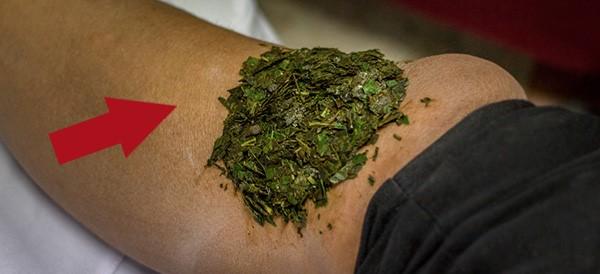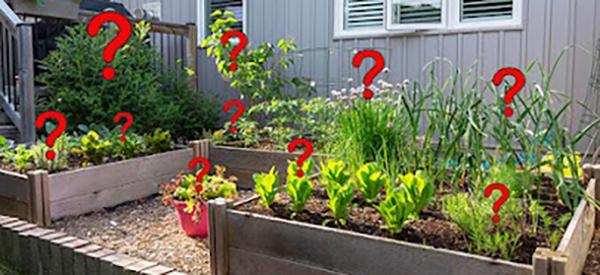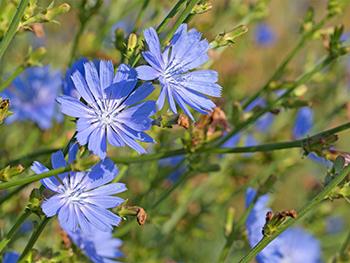

The $200 A Pound Mushroom You Should Forage For Profit
POSTED DECEMBER 16, 2021 BY ROSE KEEFE IN ALL ARTICLES, BACKYARD PLANTS, HOUSEHOLD REMEDIES12
On the surface, no one would assume that you could get rich by picking mushrooms, and normally you wouldn’t – unless that mushroom was Morel (Morchella esculenta).
Morel mushrooms sell for $20 a pound when freshly picked. Drying them first can be even more lucrative: a pound of these dried delicacies goes for up to $200, with approximately seven pounds of fresh mushrooms being needed to make a pound of dried.
Morels are highly sought after by mushroom lovers and cordon bleu chefs alike for their meaty texture and rich, nutty flavor. Even those who ordinarily wouldn’t let mushrooms touch their plate are said to enjoy them, which is one of the reasons why people are willing to pay premium prices for them.
What Are Morels?
Morel mushrooms are distinctive-looking due to their cone-shaped cap and sponge-like texture. Caps range in color from pale cream to almost black, with a pitted, honeycomb texture. Morels are hollow, stand two to four inches tall (when completely developed, some species are six inches tall), and have a white or cream stem.
Each spring, foragers in North America and Europe brave the wilderness to harvest morels and sell them at farmers’ markets or to fancy restaurants. They are typically found in wooded areas, around ash, aspen, elm, oak, and tulip trees, and other locations where conditions are warm and moist.
Different varieties of morels appear at different times during the season. Black morels tend to be the first to appear in North America, usually in large groups around ash trees. These are followed by yellow morels, which are often scattered alone or in small colonies. Late morels arrive last. They have small, yellow caps and can be more difficult to spot than other varieties.
How Do You Forage For Morels?
If you’ve never foraged for morels before, it’s best to do so with someone who knows how to recognize them or to get a foraging book to reference.
There are some mushroom species known as ‘false morels’ (Verpa bohemica) that look similar but are toxic. If there is a naturalist’s club in your area, contact them to see whether they offer guided walks or mushroom foraging sessions that can help you learn the differences.
If you primarily forage on public lands, which you share with the general public, you need to be careful about over-harvesting. When you grab every morel mushroom from a given spot, it deprives others of the opportunity, and you could even damage that location from producing again.
A sustainable approach is to only harvest a small percentage of a given spot, which will leave enough mushrooms to send their spores out and give others a chance at harvesting them.
How to harvest one? Some foragers prefer to simply pinch the stem off above the ground with their fingers, while others only use a knife to cleanly snip it off.
Related: The Complete Map of Edible Plants: Find Out What You Have in Your Area! (Video)
Watch Out For False Morels
The most commonly misidentified mushroom that mushroom hunters find when looking for morels is the false morel.
When you hunt for morels, look out for these false morel’s key distinguishing features:
- Mottled, ugly, distorted cap with no ridges.
- Looks more like a brain – more rounded and wider.
- Darker orange/red coloration.
- Solid inside, often quite heavy in comparison to a morel.
- The false morel’s stem is usually filled with cotton-like fibers.
- With a small twist, the cap will fall right off.
These false morel mushrooms contain the toxin gyromitrin which can cause severe illness.
Symptoms include nausea, vomiting, abdominal pain, diarrhea, dizziness, headache, muscle cramps, bloating, and fatigue. Untreated, people may go on to develop confusion, delirium, seizures, and coma.
The gyromitrin is also toxic to the liver and can lead to right-sided abdominal pain, hepatitis, and jaundice. False morels include the Beefsteak (Gyromitra esculenta) and Early Morel (Verpa bohemica) mushrooms.
Why Are Morels So Expensive?
At upwards of $20 a pound fresh ($200 when dried), morels are a lot pricier than portobello, oyster, cremini, and other mushrooms collected for the culinary market. Here are a few of the reasons why.
- They’re Difficult to Cultivate: It is extremely difficult to farm morel mushrooms, though Michigan State University has researched how to cultivate them. Morel farming has also been attempted in China. It is debated whether these cultivated morels are of the same quality and taste as their wild counterparts, so for the time being, hand-picked morels are staying in demand at premium prices.
- Their Growing Season is Short: Unlike a lot of other mushroom species, morels have a short growing season. Depending on climate, elevation, and weather, you can only collect them between March and June. This rarity is another reason why they are so popular. Dried and frozen morels are available year-round, but many claims that the taste is not comparable to a fresh mushroom.
- They’re Perishable: Being hollow, morels don’t store or transport well, so getting them to the market can be challenging. Those mushrooms that do make it command higher prices.
Health Benefits Of Morels
Both fresh and dried morels have high levels of antioxidants, vitamins, and minerals. They have the highest concentration of Vitamin D among all the edible mushrooms, with 100 grams containing 34% of your daily requirements. The same amount also contains the following mineral levels:
- 69% copper, which is essential for blood cell production and cellular metabolism.
- 52% iron, which the body uses to make hemoglobin, a protein in red blood cells, and myoglobin, a protein that provides oxygen to muscles.
- 26% manganese, helps the body form connective tissue, bones, blood-clotting factors, and sex hormones.
- 18% zinc, which plays a vital role in immune function.
Other Medicinal Benefits Are Outlined Below
- Antimicrobial Properties: According to one study, morel mushrooms have impressive antimicrobial properties that may enable them to fight infections caused by yeast and bacteria. Although more research is needed in this area, the results suggest that more consumption can help the body overcome certain bacteria-related illnesses.
- High Antioxidant Levels: Antioxidants help combat free radical damage and protect cells from oxidative stress. Several studies have indicated that antioxidants have benefits beyond the cellular level, reporting that they may also help prevent chronic diseases such as cancer and heart disease.
- May Support a Healthy Liver: Research shows that morel mushrooms can protect and maintain liver health due to their strong antioxidant properties. An animal study conducted by the Amala Cancer Research Centre in Kerala, India showed that administering morel mushroom extract reduced liver disease markers and exhibited hepatoprotective properties.
- May Have Cancer-Fighting Properties: Besides enhancing immunity and providing plenty of disease-fighting antioxidants, morel mushrooms may also play a crucial role in preventing cancer. The International Journal of Molecular Sciences published a study that found compounds extracted from morel mushrooms inhibit the growth and spread of colon cancer cells.
- May Boost the Immune System: Preliminary studies suggest that certain compounds found in morels may boost the immune system and relieve inflammation. One study showed that polysaccharide extracts of the morel mushroom increased the activity and anti-inflammatory properties of immune cells.
How To Dry Morel Mushrooms At Home
Because Morel Mushrooms have quite a short season, drying them is important. This way you can store the precious fungi in air-tight containers or jars under room temperature for as long as 6 months – or even more when kept in a freezer. When using dried morels in recipes, just re-hydrate them.
- Air-Drying: For this method, no equipment is needed, except for a few sewing supplies such as a large yarn or darning needle, and a thread.
Thread the needle, then string the cleaned morel mushrooms lengthwise. Knot the thread at each morel mushroom end to keep them in place, leaving at least ½” between each morel so the air can circulate every mushroom. Hang the stringed mushrooms in a dry, cool place until the morels are brittle and completely dry. This should take anywhere from 2 days to 1 week.
- Dry the Morels in the Dehydrator: Once the morels are cleaned and dried off, lay them in a single layer on the racks. You can also slice them up if needed. Set the dehydrator to 110 F and dry for about 10 hours.
- Oven-Drying: Whether laying the morels on cooling racks or hanging them from the oven racks, you need to heat the oven to 130 F to 140 F. Allow the mushrooms to sit for about 8 hours or until completely brittle and dry. Check after every couple of hours.
Allow the dried morels to cool completely before transferring them to glass jars.
Cover tightly with lids and store away from direct light or heat.
Rehydrate Dried Morels
The process of rehydrating dried morels is quite simple and easy. Put the specific amount you intend to use in a bowl, then cover it with water. Let sit until the morels are soft and pliable, about 20 minutes. You may keep the soaking liquid to use in the dish you’re cooking or to make a vegetarian broth.
Use the rehydrated morel mushrooms as you would fresh ones.
How To Prepare Morel Mushrooms
You can realize the health benefits of morel mushrooms by consuming them as food.
Here are some ideas:
- The best way to savor the flavor of morels is to cook them simply. A simple sauté with butter will help bring out the mushroom’s unique characteristics: for best results, wait until the mushrooms are browned in the cast iron pan before adding butter, as the butter may burn before the morels are ready. For added flavor, sauté with garlic and/or ginger.
- Fried: In a large skillet, heat vegetable oil until very hot. Roll mushrooms in flour, tap off excess, and place in the oil. Pan-fry for about five to eight minutes, until mushrooms are golden brown and the flour coating is crisp. Drain morels on paper towels, salt to taste, and enjoy!
- Boiled: If you’re a fan of Pho or Ramen, dehydrate the morels in boiling water for 15 to 30 minutes and add to your favorite recipe. They make a chewy and delicious meat substitute.
- Pizza Topping: Rehydrated morels are a tasty and nutritious pizza topping. Sprinkle as you would regular mushrooms and then pop the pizza in the oven.
- Simmered: To rehydrate dried morels for soups, pour boiling water over them and soak for 15 to 30 minutes. Drain and save the soaking liquid for soup stock. Then add the rehydrated morsels to soups or stews as a meat substitute.
- Caramelized with Onions: Caramelized onions and mushrooms are the perfect addition to just about any meal. Melt three tablespoons of butter in a large skillet, add one sliced onion and 8 ounces of chopped morels, and top with pepper, stirring to coat. Simmer uncovered over medium-low heat for 30 minutes, stirring occasionally to prevent burning. Remove from heat and enjoy.
- Mushroom powder can be mixed with flour when baking, or dusted over roasted vegetables. It is a healthy way to add umami and depth of flavor to any dish.
While morels continue to be prized for their rarity and great taste, their health and medicinal benefits are equally exceptional. Collecting them can earn an impressive second income, but don’t forget to save some for yourself as an investment in your health.
You may also like:
The Only 6 Medicinal Mushrooms You Need To Know
Add This “Unusual Nutrient” to Coffee or Tea, to Effortlessly and Fully Empty Your Bowels Every Single Morning (Learn More)
Food Remedies That Can Starve Cancer Cells
Homemade Lion’s Mane Tincture for Brain Fog
Eat This to Fertilize Your GutPlease Spread The Word – Share This Post
12 Comments
LORIE CONN POSTED DECEMBER 16, 2021 4:15 PMYou forgot to mention that when picking morels you should gently shake the mushroom after picking, over the ground where it was picked. That releases the spores to start the next generation in an already proven spot for them to grow for next year.Reply
MARINA POSTED DECEMBER 16, 2021 6:01 PMExcellent reminder, especially for Newbies! Thanks 😉 I get a small crop in my backyard, but am more of a country gourmand than an entrepreneur 🙂Reply
DAN BOGDAN POSTED DECEMBER 16, 2021 9:36 PMCould these Morel Mushrooms be found within the Georgia Forests, during the spring / early summer?Reply
THE LOST HERBS POSTED DECEMBER 22, 2021 4:27 PMHi Dan,This sighting map is a great way to see where you can find morel mushrooms in your area:
https://www.thegreatmorel.com/morel-sightings/I hope this helps!Reply
ANGELIQUE POSTED DECEMBER 16, 2021 10:20 PMI love these mushrooms and wish they grew where I live. I secure mine from a couple of sellers on eBay. They dehydrate them and sell them at a fair price. But yes, they are expensive but worth every penny. As they are a delicacy indeed. Excellent reminder when harvesting from Lorie. Tap tap tap and then put in your sack. You want to come back to a fresh new harvest.Reply
SABBY POSTED DECEMBER 16, 2021 10:28 PMWent into my garden and my eyes grew wide 😳and I squealed with delight. You’d think I won the lottery, well I sorta did. From the several truckloads f cmpost I purchased at forest products, morels popped up everywhere! Truely blessed😀Reply
LAURIE REDMOND POSTED DECEMBER 16, 2021 10:52 PMI had some black morels growing in my yard this year, but didn’t harvest them because I knew they were growing on sumac roots. I was afraid they would be toxic because of the sumac. Are they?Reply
AP POSTED FEBRUARY 3, 2022 4:10 PMLaurie, I have no idea if morels growing on poison sumac roots would be safe, but most common sumac trees are not poisonous at all. If your sumac tree produces red berries, it is safe and in fact the berries themselves are edible. Poison sumac berries are white and it grows in swampy areas. Most likely, your sumac tree is not the poisonous one and the morels growing from it are safe.Reply
PAIGE POSTED DECEMBER 17, 2021 3:41 PMTurkey Tails are not in the Forages Guide…Reply
GARY MEACHEN POSTED DECEMBER 18, 2021 2:44 AMDo Morel mushrooms grow in Australia?Reply
THE LOST HERBS POSTED DECEMBER 21, 2021 9:11 PMHi Gary,
There are quite a few species of Morels growing in Australia as well.Morchella Australiana is a species of ascomycete fungus in the family Morchellaceae. It is found in New South Wales, Tasmania, and Victoria, Australia.Many blessings and good health!Reply
JANET RENO POSTED MARCH 7, 2022 8:51 PMI am very disappointed in the way the articles print out now. I really liked it when it printed just as it showed on the computer.Reply
Add Comment
Your email address will not be published. Required fields are marked *
Save my name, email, and website in this browser for the next time I comment.
I accept the Privacy Policy
Notify me of followup comments via e-mail. You can also subscribe without commenting.
FOLLOW US
WE RECOMMEND
RECENT POSTS
- 10 Medicinal Herbs to Plant in Early Spring
- Spring Tea Recipe
- Slippery Elm
- How To Quickly Cool Any Fever
- Antiviral Herbal Mulled Cider
- Herbs to Boost Oxytocin, the Happiness Hormone
- Yerba Santa
- Amish Cough Syrup Recipe
- 10 Herbal Remedies to Delay Aging
- Fat Burning Tea
- Amaranth
- Fresh or Dried Herbs?
- How to Get Rid of Warts With Duct Tape
- Homemade White Cell Boosting Juice
- Saw Palmetto
- Use This Recipe If You’re Losing Hair
- 10 Carcinogenic Foods You Probably Eat Every Day
- Why Should You Add Figs to Your Daily Diet?
- Plantain
- Soothing Medicinal Herbs for Deep Rest
CATEGORIES
The Healing Power of Backyard Plants at Your Fingertips
Follow us





